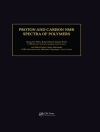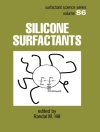The scientific exploration of solid materials represents one of the most important, fascinating and rewarding areas of scientific endeavour in the present day, not only from the viewpoint of advancing fundamental understanding but also from the industrial perspective, given the immense diversity of applications of solid materials across the full range of commercial sectors. Turning Points in Solid-State, Materials and Surface Science provides a state-of-the-art survey of some of the most important recent developments across the spectrum of solid-state, materials and surface sciences, while at the same time reflecting on key turning points in the evolution of this scientific discipline and projecting into the directions for future research progress. The book serves as a timely tribute to the life and work of Professor Sir John Meurig Thomas FRS, who has made monumental contributions to this field of science throughout his distinguished 50-year career in research, during which he has initiated, developed and exploited many important branches of this field. Indeed, the depth and breadth of his contributions towards the evolution and advancement of this scientific discipline, and his critical role in elevating this field to the important position that it now occupies within modern science, are demonstrated recurrently throughout the chapters of this book. Individual chapters are contributed by internationally leading experts in their respective fields, and the topics covered include solid-state chemistry of inorganic and organic materials, heterogeneous catalysis, surface science and materials science, with one section of the book focusing on modern developments in electron microscopy and its contributions to chemistry and materials science. The book serves as a modern and up-to-date monograph in these fields, and provides a valuable resource to researchers in academia and industry who require a comprehensive source of information on this important and rapidly developing subject.
Inhaltsverzeichnis
Chapter 1: Voyages with the Master;
Chapter 2: Multifaceted studies of zeolites and other catalytic materials;
Chapter 3: The deductive approach to chemistry, a paradigm shift;
Chapter 4: Future energy materials;
Chapter 5: Structure diversity and potential applications of metal-organic coordination polymers;
Chapter 6: Elucidating crystal growth in nanoporous materials: the importance of microscopy;
Chapter 7: Exploration of new porous solids in the search for adsorbents and catalysts;
Chapter 8: Concerning the solid state packing of [(But CO2)3M2]2(?-9, 10-anthracene-dicarboxylate) compounds (M = Mo or W) and other matters;
Chapter 9: High pressure and high temperature oxidation in the Ir Sr2RECu2O8 family of cuprates: the disordered multiple perovskite (A1/3A’2/3)(B1/3B’2/3)O3-x phases: Chapter 10: Melting and amorphisation;
Chapter 11: Computer modelling and solid state chemistry;
Chapter 12: Towards a catalogue of designer zeolites;
Chapter 13: Discovering new crystal architectures;
Chapter 14: Chemical modulations in Pb-Bi-sulphosalts: a glimpse at minerals in solid-state chemistry;
Chapter 15: Complexity – in the eye of the beholder;
Chapter 16: Synthesis and characterization of Zn-T-sites in mazzite;
Chapter 17: Anything protons do, muons do better !;
Chapter 18: Molecular cohesion and the structure of organic crystals;
Chapter 19: Aperiodicity in organic materials;
Chapter 20: From the synthesis of acetylenic natural products to seeing the light with polymers;
Chapter 21: Molecular recognition within one-dimensional channels;
Chapter 22: FTIR study of short range mobility in some crystalline peroxides: solid-state rotational isomerism of CO2;
Chapter 23: From ‚Nature‘ to an adventure in single site epoxidation catalysis;
Chapter 24: A comparison between enzymes and solid state catalysts;
Chapter 25: Zeolite modelling: active sites in different framework structures and in different crystallographic positions;
Chapter 26: Magnetic resonance imaging: a new window on the catalyst operating in the reactor environment;
Chapter 27: Dissociative chemisorption of hydrogen chloride at Cu(110): atom resolved time-dependent evidence for transient states in the formation of the ‚final state‘ stable chloride overlayer;
Chapter 28: Recent advances in single-site photocatalytic solids constructed within microporous and mesoporous materials;
Chapter 29: Structural organization of catalytic functions in Mo-based selective oxidation catalysts;
Chapter 30: Designing active sites at surfaces – from tightly bound to loosely anchored;
Chapter 31: Polynuclear transition metal cluster complexes containing tin ligands: precursors to new heterogeneous nano-catalysts;
Chapter 32: Selective oxidation using gold and gold-palladium nanoparticles;
Chapter 33: Electronic factors in hydrocarbon oxidation catalysis;
Chapter 34: The importance of selectivity in ammoxidation catalysis;
Chapter 35: The mysteries of water in catalysts preparation: solvent or much more?;
Chapter 36: Solid acid microporous H-SAPO-34: from early studies to perspectives;
Chapter 37: Strategically designed single-site heterogeneous catalysts for clean technology, green chemistry and sustainable development;
Chapter 38: Catalysis by Lewis acids: basic principles for highly stereoselective heterogeneously-catalyzed cyclization reactions;
Chapter 39: Recent advances in the XPS spectra of non-conductors;
Chapter 40: Electron microscopy studies of structural modulations in micro- and meso-porous crystals;
Chapter 41: Extrapolating from fifty years of dislocation imaging – reaching into the core;
Chapter 42: Turning points in understanding the emission of brilliant light from highly defective Ga N-based materials and devices;
Chapter 43: Electron tomography: a 3D view of catalysts and nanoscale structures;
Chapter 44: Nano and mesoporous materials: a study by HREM;
Chapter 45: In situ direct observation at atomic scale twinning transformations and the formation of carbon nanostructures in WC;
Chapter 46: A survey of the Bi2O3 – Mo O3 binary system;
Chapter 47: The surface structure of nanoparticulate systems studied by aberration-corrected analytical electron microscopy












